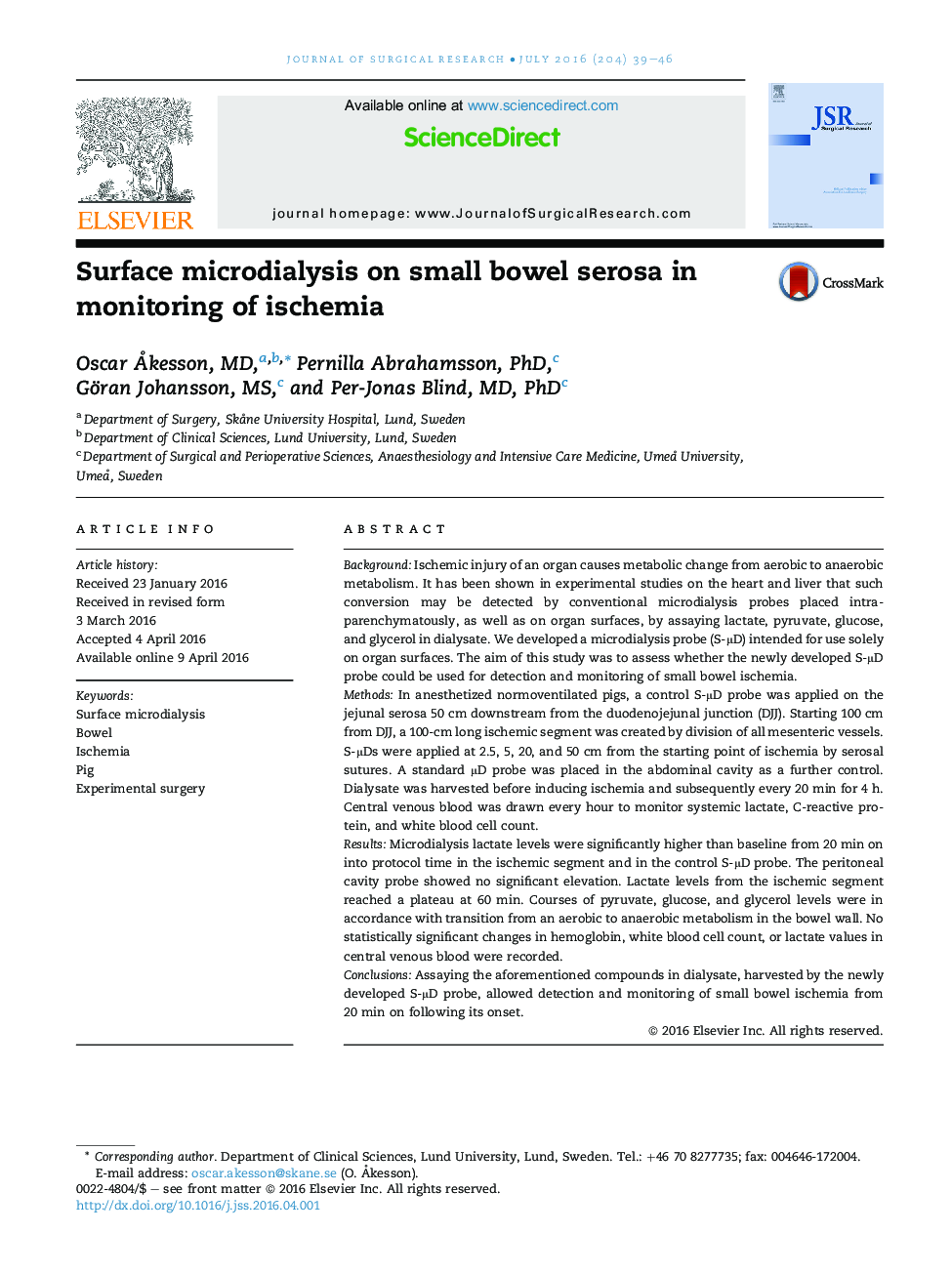| Article ID | Journal | Published Year | Pages | File Type |
|---|---|---|---|---|
| 4299148 | Journal of Surgical Research | 2016 | 8 Pages |
BackgroundIschemic injury of an organ causes metabolic change from aerobic to anaerobic metabolism. It has been shown in experimental studies on the heart and liver that such conversion may be detected by conventional microdialysis probes placed intra-parenchymatously, as well as on organ surfaces, by assaying lactate, pyruvate, glucose, and glycerol in dialysate. We developed a microdialysis probe (S-μD) intended for use solely on organ surfaces. The aim of this study was to assess whether the newly developed S-μD probe could be used for detection and monitoring of small bowel ischemia.MethodsIn anesthetized normoventilated pigs, a control S-μD probe was applied on the jejunal serosa 50 cm downstream from the duodenojejunal junction (DJJ). Starting 100 cm from DJJ, a 100-cm long ischemic segment was created by division of all mesenteric vessels. S-μDs were applied at 2.5, 5, 20, and 50 cm from the starting point of ischemia by serosal sutures. A standard μD probe was placed in the abdominal cavity as a further control. Dialysate was harvested before inducing ischemia and subsequently every 20 min for 4 h. Central venous blood was drawn every hour to monitor systemic lactate, C-reactive protein, and white blood cell count.ResultsMicrodialysis lactate levels were significantly higher than baseline from 20 min on into protocol time in the ischemic segment and in the control S-μD probe. The peritoneal cavity probe showed no significant elevation. Lactate levels from the ischemic segment reached a plateau at 60 min. Courses of pyruvate, glucose, and glycerol levels were in accordance with transition from an aerobic to anaerobic metabolism in the bowel wall. No statistically significant changes in hemoglobin, white blood cell count, or lactate values in central venous blood were recorded.ConclusionsAssaying the aforementioned compounds in dialysate, harvested by the newly developed S-μD probe, allowed detection and monitoring of small bowel ischemia from 20 min on following its onset.
